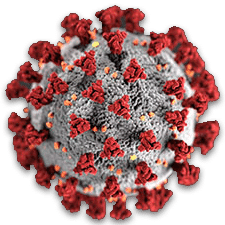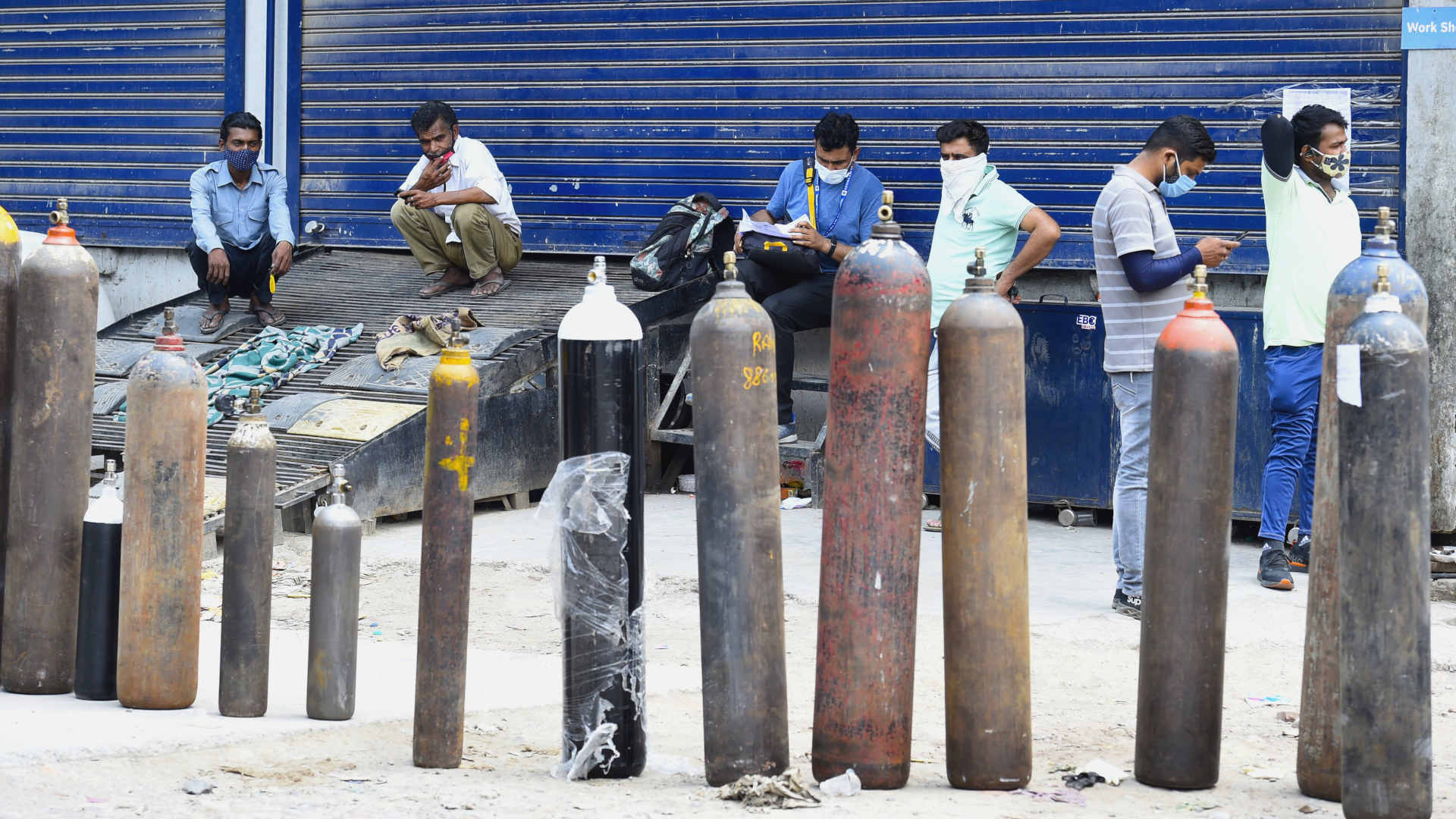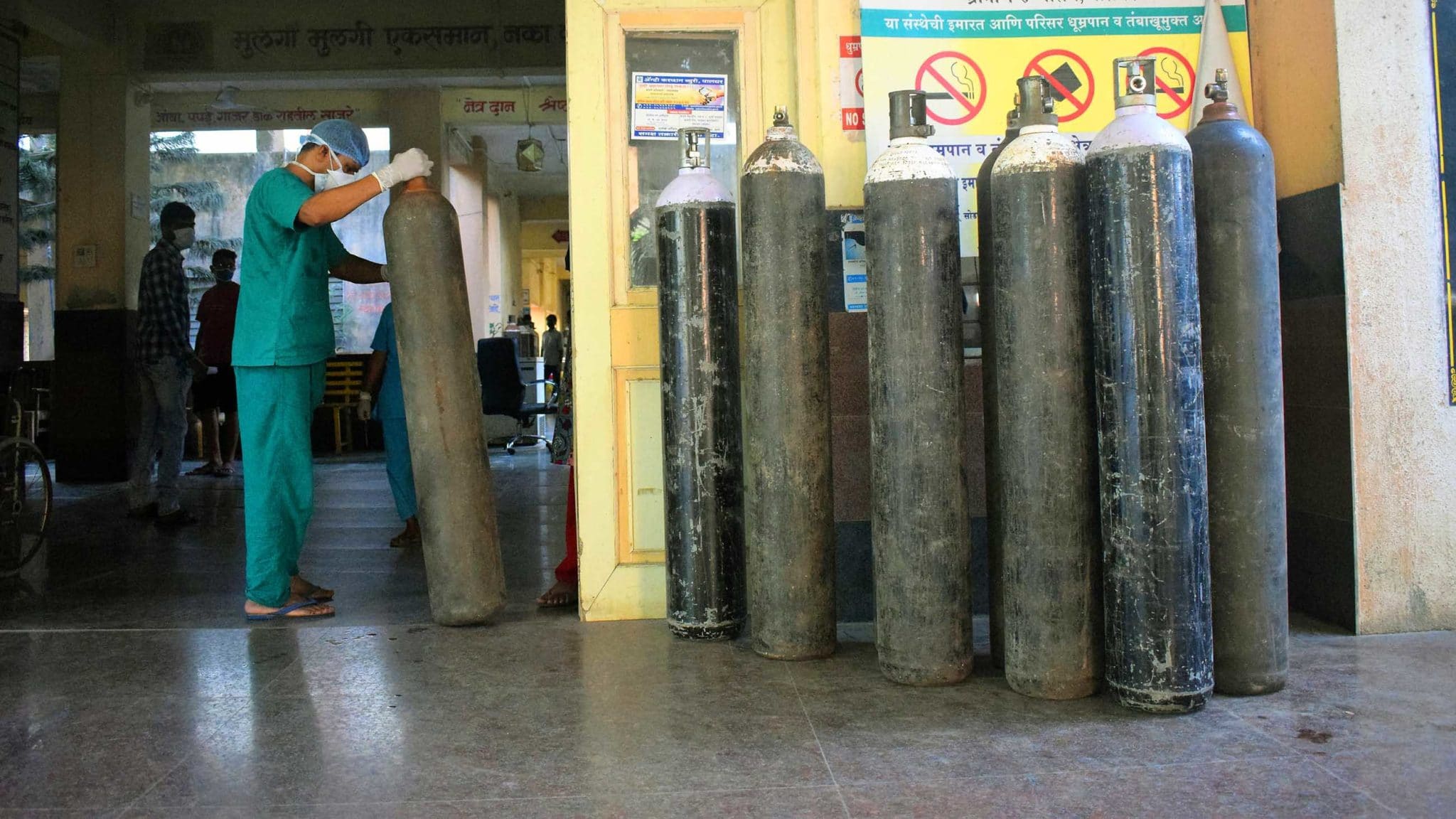India’s Desperate Fend for Themselves Amid Covid Mismanagement
On the night of April 23, Samridhi Diwan and her father drove around New Delhi, India’s capital city, from one hospital to another, searching for a facility that would admit Diwan’s mother, who was infected with SARS-CoV-2 and needed immediate medical attention. Amid a record-shattering surge of Covid-19 cases, they could find nothing. “We drove around all night, to at least nine hospitals,” said Diwan. The family finally procured a bed at a distant facility the next day, but their nightmare wasn’t over. They were told that the hospital was short of liquid oxygen — a critical component in the care of many patients with moderate to severe Covid-19. The family would need to obtain the potentially lifesaving medical supply on their own.
Across India, thousands of families have been given the herculean task of obtaining their own oxygen and other medical necessities in the midst of the world’s worst coronavirus outbreak. And yet, sources told Undark that scarcity is not the largest challenge. Rather, supply chain issues combined with governmental inefficiency have exacerbated an already precarious situation.
In interviews with Undark, physicians, families, and volunteers described grim scenes of suffering and ineptitude. “We were not prepared for the second wave,” said Aqsa Sheikh, a physician and associate professor of community medicine at Hamdard Institute of Medical Sciences and Research in New Delhi. “We didn’t develop our infrastructure in terms of ICUs or oxygen generation plants” or other health care resources. “It’s been a total failure of the government,” she said, while also blaming what she described as “irresponsible behavior on the part of the public.”
Still, several sources pointed out that residents of India have rallied to help connect patients with much-needed supplies. “I can’t even tell you how many people come forward to volunteer with us,” said Preeti Sharma Menon, a political activist and spokesperson for the center-left Aam Aadmi Party. She currently oversees a 24-hour Covid-19 helpline in Mumbai. Journalists, homemakers, businesspeople — all have offered their support, Sharma Menon said. And while they haven’t been able to help everyone, she acknowledged, they are certainly trying.
According to Chandrakant Lahariya, a physician and public policy expert, India’s central government failed to prepare for a second major wave of Covid-19 cases like the one the country is now experiencing. For example, he said, it was known that some Indian states do not have any oxygen-producing plants. “With some planning and attention to such details, we could have reduced the risks,” he said. “We should expect risk minimization from the government during a pandemic, and that was missing.” The delays in government action, he said, led to a situation in which families were left to fend for themselves, sometimes paying exorbitant prices on the black market.
Oxygen vendors and wholesalers are fairly common across Indian cities, and prior to the pandemic they catered to small-scale medical clinics and factories. These vendors buy their oxygen from larger plants, who also sell their supply directly to larger hospitals. In the last few weeks, as cases have risen, the demand for oxygen has skyrocketed.
Some patients and hospitals have started to use social media to ask for help from the community. Sheikh recalled three occasions when her hospital issued an SOS over social media. “We were on the verge of completely losing our oxygen supply,” she said. “Nearly 100 patients were at risk of dying.”
Such pleas have received a resounding response, and communities across India have quickly mobilized to help patients find beds, ambulances, drugs, and even food. Since the start of the recent surge, social media streams and WhatsApp groups have been inundated with requests from hundreds of volunteers in each state working day and night to fill the gap in public services. Many have even been helping with making funeral arrangements for the victims as crematoriums have been backed up.
Sharma Menon said the Mumbai hotline receives up to 1,200 requests for help per day. “In the first eight days of the helpline, we got an average of 800 requests a day,” she said. So far, they have connected roughly 2,000 hospitals and patients with supplies.
SaiCharan Chikkulla, founder and managing director of a pharmaceutical company in the city of Hyderabad, has taken time off work to volunteer full time. “I am keeping real-time information on hospitals and available beds. I am also coordinating with oxygen vendors to help provide refillings to those who need them,” he said. The night before speaking with Undark, a hospital director had contacted him about a shortage of oxygen at his facility. Fifteen patients were in critical condition and could die without it.
“I reached out to all my contacts but could not find a vendor for hours,” said Chikkulla. Finally, in the middle of the night, he woke a vendor who then drove to the hospital to provide refills of oxygen. The ordeal was harrowing, Chikkulla said, but no lives were lost.
A burgeoning black market for medical supplies, including oxygen, has contributed to the country’s challenges, said Chikkulla. “Those who are being turned away from hospitals are being treated at home, and they need oxygen cylinders,” he explained. “This situation is being exploited by black marketers.” An empty oxygen cylinder that previously cost about 7,000 rupees, or $95, is now selling for anywhere from three to four times that. A cylinder with oxygen might approach as much as $1,000.
Sharma Menon explained the market dynamics: Registered suppliers are bound by law to sell their product at no more than what’s considered the maximum retail price. But some have found a loophole, selling supplies to middlemen who then sell the medical supplies at a much higher price based on growing demand. This process creates an illusion of market scarcity, she explained. Suppliers claim to have no stock, when in reality they are reserving their products for middlemen who then give them a cut of the profits.
“For many families, the cost of a cylinder is their entire month’s income,” said Sharma Menon. “They are devastated.”
Sheikh has observed this, too. “When someone is grappling with the possibility of the death of a loved one,” they will pay any price they can afford. “Unfortunately, antisocial elements of the society are exploiting this insecurity,” she said.
 |
For all of Undark’s coverage of the global Covid-19 pandemic, please visit our extensive coronavirus archive. |
All of this has made life miserable for families like Diwan’s.
With the hospital running out, and her mother’s health deteriorating, Diwan went to the market to obtain an oxygen cylinder, an industrial container that at one typical size can store about 9 gallons of liquid oxygen and which might last a patient with severe Covid-19 symptoms only a few hours, according to Sheikh. But there were no cylinders there. Eventually she obtained one from a friend who had used the cylinder in the factory he owned. “We borrowed it from his factory and had it refilled. But we had to return it soon,” she said. Many of the friend’s family members were also infected with the virus and in need of oxygen.
A second cylinder, purchased later, was stolen when Diwan’s uncle was standing in one of the large lines at the refilling vendor at 1 a.m. According to Diwan, a fistfight broke out between some of the people, and in the chaos that ensued, someone stole the family’s cylinder. “That is how things are,” said Diwan, whose mother has since been discharged and is recovering at home. “People are ready to hurt other people.”
Despite the best efforts of families and volunteers, some aspects of the supply chain are simply beyond their control. Before this current stage in the pandemic, “we knew that there is a limited supply of cryogenic tankers,” said Lahariya, referring to large trucks with insulated storage containers that can keep liquid oxygen at the very low temperatures that are required. Last year, he says, the central government discussed ways to prepare for a surge, and even decided to establish additional oxygen-producing plants. But, he said, “it was not followed through and we ended up in this crisis.”
The problem is especially acute in the state of Delhi, which has relatively little industry, and therefore has never needed to produce or receive large quantities of oxygen. In the early days of the crisis, the central government abdicated its role by saying the Delhi government would need to arrange for its own oxygen supply, said Sharma Menon.
She added that the political differences between the state government — controlled by the Aam Aadmi Party — and the central government — controlled by Prime Minister Narendra Modi’s Bharatiya Janata Party — contributed to the crisis in the capital. “Some local administrators also attempted to prevent the oxygen tankers from entering the capital city,” she said. This prompted the High Court of Delhi to threaten anyone disrupting the oxygen supply with dire action last month. “Rest assured that we will hang that man. We will not spare anyone,” the court said.
Despite judicial orders, little progress has been made on ensuring a smooth supply of oxygen and other medical resources, said Sharma Menon. According to her most recent records, Delhi is only receiving one-third of the oxygen it needs to supply its citizens. In news reports, officials from the central government have countered that Delhi is receiving more than its fair share of oxygen, but it is not being efficiently managed.
Whoever is to blame, shortages across the country have left many Indians frustrated. “Had the government involved itself in the beginning, things wouldn’t be so bad,” said Chikkulla. “I am still requesting plant owners in our state to collaborate with the government to ensure a smooth supply. But the system is already too broken.”
In the meantime, the burden remains with families who were little prepared to carry it. “Common people don’t have the skillsets to deal with such situations but have been forced to adapt,” said Sharma Menon. For her, the losses are personal. She lost her father to the pandemic last year and relates to the grief of those around her. “I still haven’t got over it,” she said. “What is happening today is outrageous and unacceptable.”











